Construction of the British aircraft carrier Queen Elizabeth is nearing completion
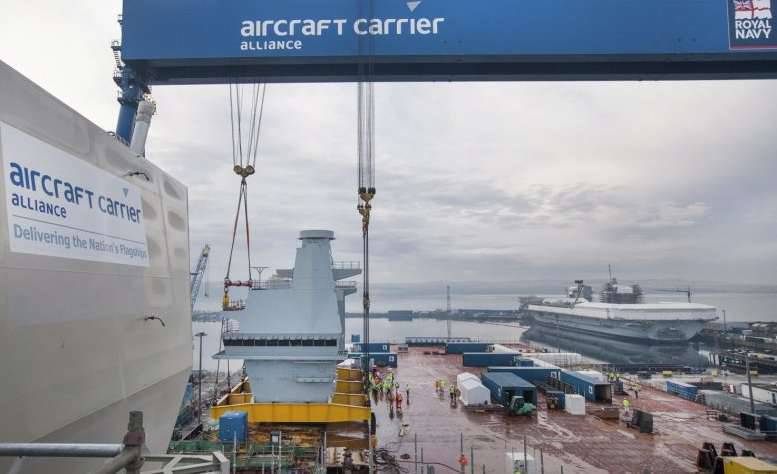
A milestone program for the United Kingdom to build new large aircraft carriers such as the Queen Elizabeth (QEC - Queen Elizabeth Class) is accelerating and the construction of the lead ship of this type is nearing completion. The aircraft carrier Queen Elizabeth, currently at the stage of system integration and mooring trials, is expected to be put to sea for the first time trials from Rosyth at the end of 2016 of the year or at the very beginning of 2017 of the year. Factory sea trials must precede Queen Elizabeth’s official acceptance by the UK Department of Defense for the construction of the Aircraft Carrier Alliance (ACA) in the future Queen Elizabeth home port in Portsmouth in the second half of 2017.
Jan Booth, ASA Managing Director (Babcock Consortium, BAE Systems, Thales and the British Department of Defense) explained at an open day organized by ASA and the Royal Navy in Rosaite in February 2016 of the year that studying the experience of large-block construction of the 65 000 ton aircraft carrier allowed to reduce the time required for the manufacture, equipment and assembly of the hull blocks of the second Prince of Wales by about nine months.
At its peak, the QEC program provided about 10000 jobs across the UK industry, and loaded the shipbuilding capacity of nearly every shipbuilding and ship repairing facility remaining within the UK - as well as some overseas. British shipyards involved in the construction of the ship blocks include A&P in Hebbourne; Babcock International in Appledore and Rosyth; BAE Systems in Portsmouth and Glasgow; and Cammell Laird in Birkenhead. Final assembly takes place at the former Naval Dockyard in Rosyth, where 4500 people are employed to assemble, complete and staff both ships, with the assistance of Royal Navy officials and crew.
At the peak of work, the number of workers employed in the construction of Queen Elizabeth in Rosaite reached 2500. In contrast, the workforce designed to work on the Prince of Wales does not exceed 2000 people, and work is currently being carried out on a two-shift basis (the maximum number of employees on board at any time is no more than 1500). It is worth noting that due to competition and lack of national personnel, not all workers employed on the second ship are British. Judging from the languages used in safety notices that can be seen on board, the 2% of the workforce is hired from Poland and Romania - mainly qualified welders and pipelayers, according to an ACA representative.
Completion of the crew’s arrival on board Queen Elizabeth is currently in priority. In preparation for the transfer to the gradually increasing crew of the ship, moving from shore to be placed on board, the 415 of the 471 cabins have already been transferred, and the main galley is completed. A total of 1100 premises were taken by early February 2016, and "more 2000 will follow," Booth said.
The arrival of Queen Elizabeth in Portsmouth is eagerly awaited, as this will be an important psychological moment for both the British government and the Royal Navy. The key factor determining the possibility of transition from Rosayt will be the readiness of the electrical installation of the ship.
The 110 MW power plant for QEC was created by a consortium of Thales UK, GE Converteam, L-3 and Rolls-Royce. The installation includes two gas turbine generators MT30 with 36 MW capacity and four Wärtsilä 38 diesel generator sets with total power 40 MW; power distribution system; integrated management system (IPMS); stabilizers; and four advanced asynchronous 20 MW electric motors for driving two shaft lines and propellers.
The electrical system aboard the Queen Elizabeth is “fully connected and gives power,” said Booth, the high and low voltage current distribution system and IPMS are already operational. The engineer officer explained that the propulsion complex is being tested with a step of 10 revolutions per minute, with a run time of 1 an hour of 45 minutes per increment until the specified maximum speed of the shaft 140 revolutions per minute has been reached. By mid-February, the power system was successfully operating with the 50-percent load of the nose gas turbine generator, performance had to be repeated using the feed gas turbine generator later that day, followed by an increase in load.
According to Bout, "if things are going well in October, then we will be able to go to sea and start the sea trials before Christmas." Alternatively, he said, a decision could be made to “do more [preparatory] work here and go to sea at the beginning of 2017.” In any case, the timing of the transfer of Queen Elizabeth to Portsmouth will not have any impact on the planned date of delivery.
QEC control systems include an integrated navigation system and navigation bridge, an automated combat control system (ASBU), communications systems, an administration and logistics system, and an air traffic and flight control system aviation. According to Booth, most of the elements of these systems on board Queen Elizabeth are also already “connected and interacting with each other” in preparation for mooring trials, engineers are engaged in commissioning and factory testing of most of the aviation control system and ACS.
The connection between the various elements of the systems is provided by more than 1740 km of fiber optic cable integrated into the ship's internal network. Currently, the work is focused on the integration of the ASU with BAE Systems / Thales S1850M 1046 (LRR) long-range radar and BAE Systems ARTISAN 3D + type 997 medium-range radar, respectively, used to illuminate the air and surface situation at long range and control air traffic and coverage of a tactical situation at a medium range. The LRR radar is capable of tracking 1000 air targets over the 250 miles, but at the moment it operates at reduced power (at a distance of 165 miles), although this is enough to track the movement of all aircraft flying from Glasgow and Edinburgh airports. In operation, the AMS will also be used to compare and integrate information from the sensors of escort ships, including their electronic reconnaissance and EW facilities.
In addition to the combat information center equipped with ASBU, the ship has a special command center for the commander of the carrier strike group, as well as a ship intelligence center for processing secret information. It is also possible to create a space capable of accommodating an 75 person sufficient for a “two-star” (vice-admiral) headquarters. In the usual manner, these areas can be used as a space to house a naval or aviation headquarters or marine units. To expand or upgrade the network, additional fiber optic cables can be quickly installed through existing pipelines using high pressure air.
The highly mechanized ammunition supply system includes 56 autonomous lifts used to transfer ammunition between the cellars and the flight deck, also already installed and operating. Both aircraft lifters are already installed, and the bow has already been put into action. The metal thermal protection coating required to protect the flight deck from jet engines of F-35B Lightning II aircraft has already been tested and is currently installed on three of the six Queen Elizabeth deck platforms, covered with protective ventilated awnings.
While the deck coating used on conventional aircraft carriers was able to withstand no more than two vertical landings of the F-35B aircraft, it is expected that the new coating developed by Monitor Coatings will require reapplication only once every three years and will also provide Improved adhesion / friction characteristics (ACA team member told Jane's that the procedure for emergency repair of combat damage with the new coating has not yet been worked out).
The Queen Elizabeth hangar is designed to accommodate up to X-NUMX F-24B units, with a maximum aircraft-carrying capacity of around 35 aircraft. The hangar deck is divided into four separate “squadron zones”, in order to provide services for the corresponding number of aircraft group aircraft. In the gallery on the hangar deck there will be two containerized, deployable simulators that will allow the F-40B pilots to practice the four-plane link in a virtual environment.
Meanwhile, rapid progress has been made in assembling the Prince of Wales in one of Rosyth’s dry docks. His last sponsor will be installed in May 2016 of the year, and this should complete the formation of the corps by the middle of the year, so this stage will be completed in less than two years. However, assuming that the dates will not be postponed, the ship’s withdrawal from the dock will not take place for almost another year - before the naming ceremony, which will take place in March or April of 2017.
Capten Simon Petitt, chief observer of the Navy for QEC, acts as commander of the crews of both ships at this stage of construction. According to Capit Petitt, despite the involvement of various design teams and the use of computer-aided design methods, as well as various weather conditions that should have influenced the construction of hull blocks at various shipbuilding sites, the accuracy of the QEC building system was amazing.
When he took office in the 2012 year, Queen Elizabeth had ten people on the crew, but reached more than 400 people (from the planned 733 maximum) in February of the 2016 year. The Prince of Wales still has a crew of all 12 people, although he is expected to grow to 70 by the time Queen Anizabeth is handed over.
Although the crew is not responsible for supplying the ships for itself, the ship’s crew is tasked with developing a significant part of the operating manuals, completing the training process, and then "putting it into the sea under the Blue Flag." As part of the process, the 70 engineers of the Royal Navy have so far been part of the receiving and testing teams in order to obtain technical knowledge that will be used in the operation of ships after their delivery.
Of primary interest to operators, logistical bottlenecks were eliminated, thanks to an improved layout project. As a rule, in previous projects of military ships, most of the food supplies should be stored in any accessible premises, whereas in QEC all the stores are organized in their optimal locations. Combined with high-capacity automated systems and hoists, 20 seafarers will be able to place supplies on their ship in half a day, compared to 100 people and the three days required for this on board the previous Invincible light aircraft carrier, which had a threefold lower displacement and about the same size of the crew.
Lunch queues are said to be not uncommon aboard American aircraft carriers such as the Nimitz, while aboard the QEC is tasked with being able to feed the entire crew (including the air group or marines) for one hour. 195 seats are located in the dining room for the lower ranks and 125 seats in adjacent areas. There is a separate galley for senior officers and officers, plus a flight crew rest gallery on the 02 deck.
In total, the ship must be over 1600 beds. The lower ranks are placed on beds in cabins that accommodate from six to eight beds. Five of these cabins are located in a single block around the public space, located in the middle of each "residential apartment" on 30-40 seats.
Cabins, company, dining room and hallway are designed to double the area for the improved medical complex Role 2 QEC, which is currently equipped at a level that allows to perform operations of stabilization surgery. Based on the experience gained from working with wounded flows at the Role 3 hospital at Camp Bastion in Afghanistan, all thresholds and obstacles in the complex were removed to increase the speed and safety of carts with patients. The nasal part of the hospital is streaming for resuscitation, and the stern part is the operating room.
As you know, the Royal Navy did not receive the increase in personnel it hoped for in preparing the 2015 Strategic Defense and Security Review of the Year (SDSR-2015), and the process of recruiting a large fleet will continue to be a “struggle”, according to one officer especially with regard to the formation of a layer of sufficiently qualified and experienced staff (SQEP) engineering specialties. Nevertheless, the increase in the number of naval forces on 400 military personnel, which was approved, must be complemented by the movement of already serving sailors, which will be possible through the process described as "internal rebalancing."
The maximum number of crew QEC, component 733 person (1624 with full air group), was originally designed for the ability to provide 72 shock combat sorties per day (108 sorties in overvoltage mode) with full operational capabilities. However, this level will not be reached for the British F-35B until the presumably 2023 of the year.
Accordingly, Navy officials told Jane's that the Royal Navy began working with the Queen Elizabeth crew to achieve maximum intensity of action “when we need it,” and embarks on similar training for the Prince of Wales - whose potentially accelerated commissioning complicates this task. . In principle, most of the crew of the Prince of Wales should be transferred from the Ocean helicopter carrier, which is scheduled to be withdrawn from service in February 2018.
Other decisions made in the SDSR-2015 are also important for ensuring the combat stability and survivability of the QEC during operational use, as well as for the readiness of the lead ship as a strike aircraft carrier.
Among other things, the British share of the F-35 program (in which the United Kingdom continues to be listed as a first-level partner) has been confirmed in the number of 138 aircraft that will be purchased during the program’s term. The number of operational aircraft that will be acquired by the beginning of 2020-s, was "calibrated" in order to ensure that the 24 British F-35Bs can operate from aircraft carriers in the 2023 year (with full operational readiness), with 14 aircraft available in parallel for educational purposes.
The number of F-35Bs previously approved for purchase as part of the 1 Tranche remains at the 48 level, but in order for both aircraft carriers to be able to be used as shock forces with the 24 operational F-35B as part of the air group, or to maximize the impact capabilities of one QEC with 36 aircraft and provide some residual combat aviation capabilities for the second QEC as an amphibious assault carrier, the optimal number of F-35B for aircraft carrier operations and training will be between 72 and 90 aircraft, it was reported by Jane's.
A study by the British Department of Defense Future Combat Air Systems should help determine which F-35 modification should be approved for purchase in subsequent tranches. SDSR-2015 left open the possibility for the Royal Air Force to acquire a certain number of aircraft of the F-35A variant specifically for operations from ground air bases, according to a statement by the recently retired Deputy Chief of Defense Staff Marshal of Aviation Sir Stephen Hiller.
SDSR-2015 also included references to plans to increase the number of escort ships of the Royal Navy "for the 2030 years", which implies an increase in the number of frigates and destroyers from 19 to 23. Six of these will be the current 45-type destroyers, and eight will be the new 26 (Global Combat Ships) type ships, optimized for anti-submarine warfare, which will provide partial replacement for the 23 anti-submarine frigates remaining in the formation.
The rest of the increased fleet of escort ships should be made up of subsequent ships of the multi-purpose version of the 26 type and the "new type of light flexible general-purpose frigates", similar in concept to the preceding 21 type, and which may be known as the 31 type.
Another key factor for the return of the Royal Navy to what one officer described as carrier-task task-group operations would be the acquisition of three Fleet Solid Support logistic ships in addition to four New universal supply tankers such as MARS (Military Afloat Reach and Sustainability), which will be launched in 2016.
COMMENTARY JANE'S
It is hoped that the capabilities of the QEC onboard networks, and the ability to expand their onboard fiber optic data network (which allow designers to play with capabilities), will be sufficient to provide the bandwidth necessary for the maximum possible use of sensors in real time and the production of technical Fifth generation F-35B strike fighter service. The QEC's onboard network bandwidth is currently limited to 8 Mb / s, while the US Marine Corps is already confronted with a narrow bottleneck of data transmission when operating the F-35B from its new universal landing craft America, whose internal network is limited by speed 32 Mbps
Recruitment clearly remains a challenge for the Royal Navy, which has already found it necessary to “take” naval engineers from foreign naval forces (including 36 from the US Coast Guard) to meet the needs of the fleet in its current size. While the Royal Navy will no doubt be able to meet the priority requirements for completing its future flagships, they cannot be used without the necessary escort of fully equipped and efficient submarines, supply vessels and escort ships, the number of which in the latter case is also planned increase
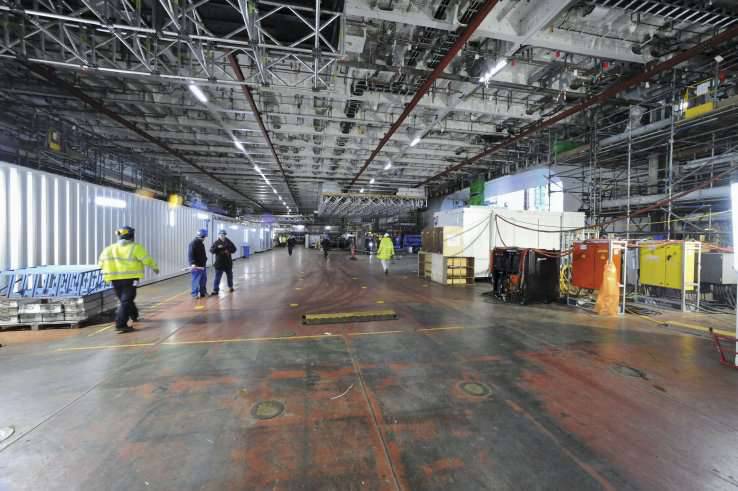
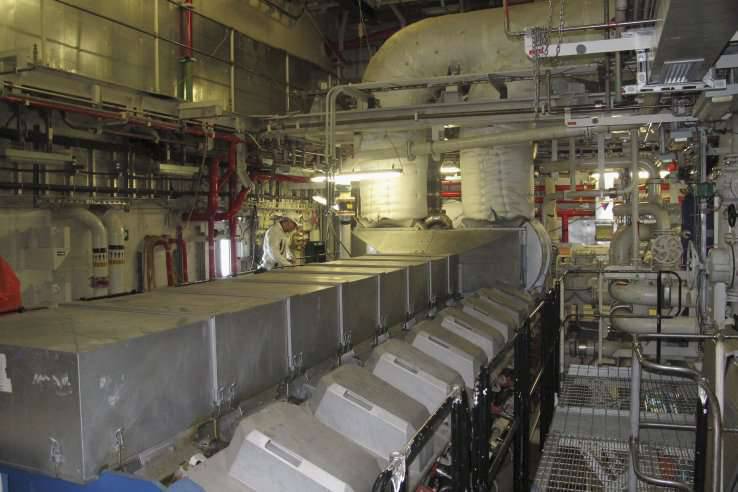
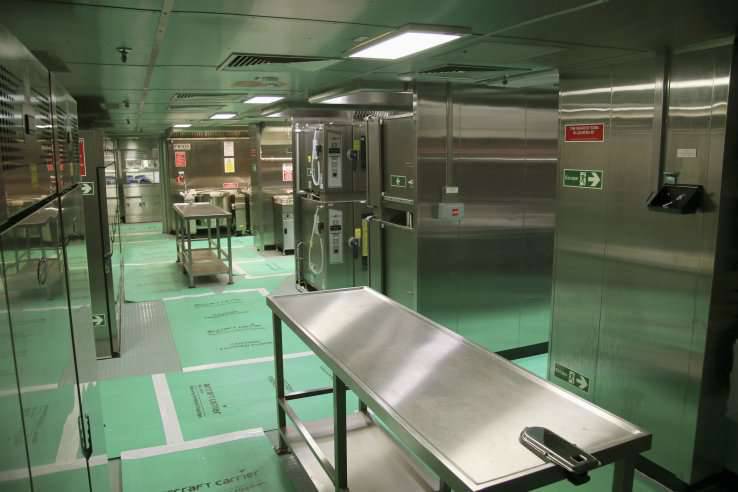
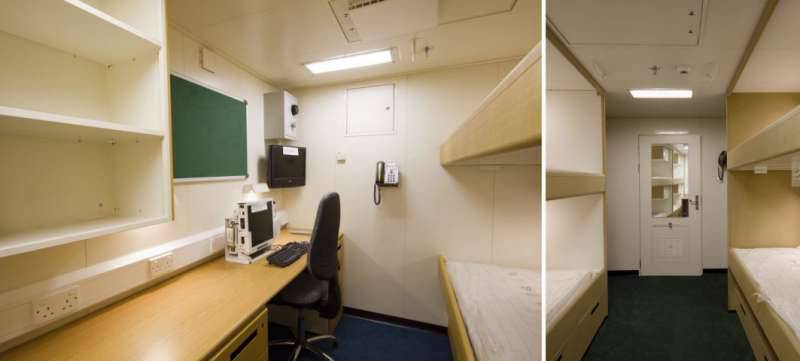
Information